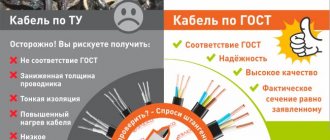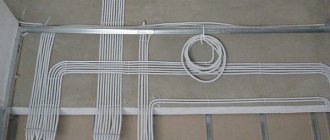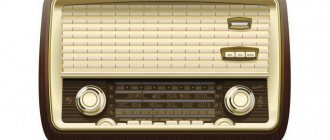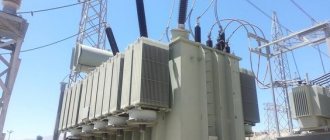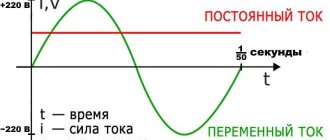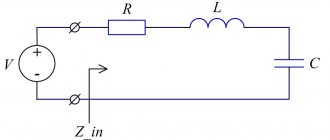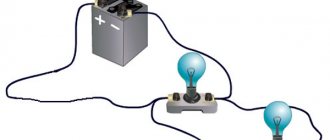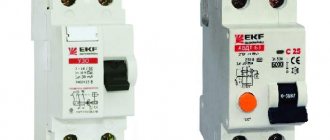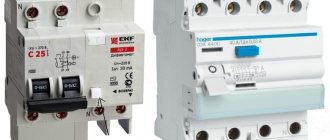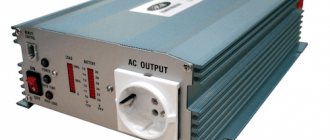Coaxial cable
A coaxial cable (coaxial pair) is a conductor that consists of a central core and a screen. They are separated by insulating material or an air chamber, but located on the same axis. It transmits radio frequency electrical signals. The difference from a shielded wire is a uniform cross-section in the direction of one axis, the manufacture of an insulating layer from higher quality materials, and better conductor quality. All dimensional characteristics are standardized by industry standards.
This product can be thin or thick. Select it in accordance with the network parameters. The slim one has a diameter of 5 mm, it is flexible, easy to use and versatile. It connects to the computer's network adapter cards and transmits the signal over a distance of 185 m without interference or attenuation. The thin cable is equipped with copper cores.
A thick coaxial cable has less flexibility in bending; its diameter is 10 mm. Its name is often listed as "standard Ethernet", due to its use in network architecture. The copper core has a larger cross-section. The signal range is 500 m, so it can be used to connect small networks consisting of a thin analogue.
To connect to a thick type of cable, a special device is used - a transceiver, which is equipped with a vampire (piercing) tap connector - “vampire tooth” or “piercing coupler”. It is able to pass through the insulation and establish a connection to the conductor. To connect the transceiver to the network adapter, you need to connect the first wire to the AUI connector of the board. It is called the DIX connector.
As the cross-sectional area of the cable increases, the complexity of its installation increases. Thin has advantages such as ease of operation, low cost, and flexibility. Thick in this regard is inferior to its counterpart, especially when it comes to laying routes through pipes and gutters. Its advantage is the ability to transmit a signal over a greater distance.
Purpose of coaxial cable and its types
The main purpose of a coaxial cable is the ability to transmit high-frequency signals used in various fields of technology and communication systems.
Everything you need to know about coaxial cable
- The simplest example of coaxial cable includes a copper core and a metal braid, called a shield, enclosed in an outer sheath. The cable may have an additional screen made of a layer of foil, in which case it is a double screen cable.
- The cable core is used to transmit electrical signals, usually consists of copper and can either consist of several intertwined cores or be single. The insulating layer separates the core from the shield, preventing it from contacting the shielding braid.
- The shielding braid protects the core from interference and “noise”, and also performs the function of grounding.
- The outer protective sheath of a coaxial cable consists of a dielectric, usually plastic, rubber or Teflon.
- Coaxial cable is superior to twisted pair cable in terms of resistance to interference and low signal attenuation. That is why it is most often used in networks that require transmitting a signal over long distances when the equipment for transmitting data at high speed has a low degree of complexity.
Types of Coaxial Cables
The main types of cables commonly used are the so-called “thin coaxial cables” (there is also a “thick” one).
Thin cable – flexible and thin. For this reason, it is quite simple to install and operate, and can also be used in almost any type of electrical communication networks. This type of cable is connected directly to the signal consumer (computer, TV, etc.). its ability to transmit a signal without distortion over a distance of up to 185 meters without distortion or attenuation makes it indispensable in laying both local and larger-scale networks.
Coaxial cable markings
For ease of use, manufacturers have developed a special marking system for different types of coaxial cable. The “thin coaxial cable” we mentioned is part of the so-called “RG-58 family,” named after the cable of the same name, which has a characteristic impedance of 50 Ohms. The ratio of the cable resistance to the alternating current flowing inside it is called “characteristic impedance.” The main feature of this group of cables is the copper core, which can be monolithic or consisting of an interweaving of several wires.
Main types of cables by marking:
- Coaxial cable RG-58/LJ – has a solid copper core;
- Coaxial cable RG-58 A/U – the core consists of intertwined “small cores”;
- Coaxial cable RG-58 C/i – military version of RG-58 A/U;
- Coaxial cable RG-59 is used for broadband data transmission (for example, cable TV signal);
- RG-6 coaxial cable is also a cable for high-frequency transmission, has a larger diameter than RG-59, but is also successfully used for broadband transmission;
- Coaxial cable RG-11 – broadband, used as a backbone cable for TV networks;
- Coaxial cable RG-213 - used for signal transmission in a variety of areas, broadband, perfectly protected.
Back to section
www.maltima.ru
Advantages and disadvantages
The high popularity of the cable is due to its advantages:
- slight attenuation;
- stability of operation at different signal frequencies;
- wide bandwidth;
- safety and ease of installation;
- low price, light weight, flexibility, ease of use.
Operational disadvantages include:
- lower bandwidth compared to optical fiber;
- the need for connectors, the complexity of their installation and high cost;
- the cost of installation work with a thick cable;
- more complex wiring compared to twisted pair;
- susceptibility to mechanical damage.
technological applications
DiSEqC switch with 4x1 switch.
Coaxial cable can be found:
- Between the antenna and the TV;
- via city cable television networks and the Internet;
- between the transmitter and its transmitting antenna (ham radio equipment);
- in video signal distribution lines (RG-59 is usually used);
- in data networks such as Ethernet in its older versions 10BASE2 and 10BASE5;
- in long-distance telephone networks and in submarine cables.
Before the widespread use of fiber optics in telecommunications networks, both terrestrial and submarine, coaxial cable was widely used in analog telephone transmission systems based on frequency division multiplexing (FDM), where communications capabilities of more than 10,000 voice channels were achieved. Similarly, in digital transmission systems based on time division multiplexing (TDM), transmission of more than 7,000 channels at 128 kbit/s has been achieved.
The cable used for these long distance transmission purposes had to be of a different structure than that used in local area network applications because, since it was laid underground, it had to be protected from tensile and compressive stresses, so it is usually separated from the corresponding insulators had external steel reinforcement.
A loaded twisted pair is a twisted pair to which inductance has been intentionally added, which is quite common in telecommunications lines, although there are exceptions for certain frequencies. These additional inductors are known as Pupin coils and reduce distortion.
Bonded twisted pair is a variant of twisted pair cable in which the pairs are connected separately, making the cable more durable. The electrical characteristics of the cable remain the same despite rough handling.
Twisted ribbon cable is a variation of standard ribbon cable that uses adjacent strands that are driven and twisted. Regarding twisted pairs, it is noted that they are slightly dependent on each other by the tape format. Periodically, as the ribbon progresses, small areas where there is no twist will be provided to ensure that the PCB connectors and connectors are connected using methods common to IDC ribbon cable.
Components
The coaxial cable includes:
- 4 – shells used as insulating and protective layers. They are made from light-stabilized polyethylene (PE), PVC, twisted fluoroplastic tape;
- 3 – the outer conductor (screen) is made in the form of a braid, foil with an outer coating of aluminum, corrugated tubes, twisted metal strips (copper, aluminum- and copper-based alloys);
- 2 – insulating layer, represented by a solid or semi-air dielectric filling, which ensures the alignment of the outer and inner conductor. It can be made of PE, foamed PE, solid fluoroplastic, fluoroplastic tape, tubular cord, washer, etc.;
- 1 – internal conductor, represented by a single straight or spiral cable, stranded conductor, tube made of copper, an alloy based on it, an aluminum alloy, copper-plated steel or aluminum, silver-plated copper.
Alignment minimizes electromagnetic energy loss due to radiation and provides protection against interference. This is due to the concentration of both components of the electromagnetic field in the space between the conductors and the impossibility of them leaving the cable. In reality, such deviations can occur, so the indicators are not ideal, and the main part of the signal is conducted through the core.
Coaxial cables, applications and characteristics
A coaxial cable is an electrical cable consisting of a central wire and a metal braid, separated by a layer of dielectric (internal insulation) and placed in a common outer sheath.
coaxial cable was the most widely used, which is due to its high noise immunity (thanks to metal braiding), as well as higher permissible data transfer rates than in the case of twisted pair (up to 500 Mbit/s) and large permissible transmission distances ( up to a kilometer and above). It is more difficult to mechanically connect to it for unauthorized wiretapping of the network, and it also produces noticeably less electromagnetic radiation to the outside. However, installation and repair of coaxial cable is much more difficult than twisted pair cable, and its cost is higher (it is approximately 1.5-3 times more expensive compared to twisted pair cable). Installing connectors at the ends of the cable is also more difficult. Therefore, it is now used less frequently than twisted pair.
The main application of coaxial cable is in local computer networks with a “bus” topology. In this case, terminators must be installed at the ends of the cable to prevent internal signal reflections, and one (and only one!) of the terminators must be grounded. Without grounding, the metal braid does not protect the network from external electromagnetic interference and does not reduce the radiation of information transmitted over the network into the external environment. But when the braid is grounded at two or more points, not only network equipment, but also computers can fail. Terminators must be matched with the cable, that is, their resistance must be equal to the characteristic impedance of the cable. For example, if a 50 ohm cable is used, only 50 ohm terminators are suitable for it.
Which is better, component or coaxial acoustics?
The main advantage of a coaxial speaker system is its small dimensions. Therefore, the use of coaxial speakers is justified where the size of the speakers plays an important role. First of all, this applies to car acoustics. Which is better: component or coaxial speakers? The vehicle's audio output devices are mounted in the doors, front panel or seat backs. In these cases, it will not be possible to use component cabinet speakers due to limited space and the configuration of the vehicle elements. Therefore, vehicles are equipped with coaxial cables designed for two or three audio frequency bands. Such speaker systems are easily mounted in seats on car doors.
What is coaxial cable
Coaxial cables are those with two conductors that are arranged coaxially. The word "coaxial" comes from the Latin axis
– axis and attachments
co
– joint. The coaxial arrangement of the conductors protects the cable from external electromagnetic fields and ensures signal transmission with low energy consumption.
Coaxial cable is used in communication systems. Here are some examples:
- Television networks.
- Computer networks.
- Video surveillance systems.
- Radio electronics, including military equipment.
- Internal communication systems in transport, including aircraft and shipbuilding.
Coaxial cable is used in military equipment because it is protected from external electromagnetic interference and is difficult to connect to unnoticed. Coaxial cable is also suitable for transmitting powerful signals that come from tracking systems.
Coaxial cables for information transmission: areas of their application
Radio frequency coaxial cables are used for various radio devices and radio frequency industrial installations. For example, coaxial cables of the RK group serve:
- in radio stations for connecting both receiving and transmitting antennas to the output stage of the transmitter and/or input circuits of the receiver;
- in radar and radio communication systems - connection of antennas and connections of individual subsystem units within the system;
- in computing – for communication between computers and with input and/or output devices, etc.
- for connecting blocks and subsystems in complex radio-electronic systems - radio communications, radar, radio detection, etc.;
- for the production of individual parts and components of equipment operating at high voltages and frequencies, for example, with radar magnetrons;
- for the transmission of large-volume analog information with frequency multiplexing - analog telephony, information transfer, communications, etc.
How does a coaxial cable work?
The outer layer is a polymer protective shell. It protects the cable from moisture, dirt, and mechanical influences. Under the polymer shell is an outer copper braided conductor. It serves as a screen: it protects the internal conductor from electromagnetic interference and also prevents signal leakage.
The outer conductor can be double. For example, there may be aluminum foil under the copper braid.
Under the outer screen there is an inner insulating layer. It is made of polymer dielectrics, such as fluoroplastic. Internal insulation ensures the coaxial arrangement of the inner and outer conductors. Beneath the inner insulation is the inner conductor. It can be copper or aluminum.
Cable structure
Such a cable typically consists of a solid copper (or copper-clad steel) core for signal transmission, covered with successive layers of internal insulation, aluminum foil, copper braided mesh, and external protective insulation. Solid wire provides better conductivity than stranded wire, but is less flexible and difficult to install. Insulation - Typically PVC (polyvinyl chloride) or non-stick coating, aluminum foil and copper mesh provide shielding to the inner core. The mesh also provides a grounding point for the cable completing the circuit.
Currently, RG coaxial cables are produced by many manufacturers, which is why there is a very wide variety of shapes, sizes, and technical characteristics of these products. The most commonly used cable type is RG59/U. In fact, this family includes cables characterized by different electrical properties. In areas where video cameras are used, other types are quite common - RG6/U, RG11/U.
How is coaxial cable classified?
Several approaches are used to classify coaxial cable. The main ones are listed below.
Type
There are three types of cable:
- RK – radio frequency
- RD – radio frequency two-wire
- RS – radio frequency with spiral conductors
By wave impedance
The most commonly used cables are 50 and 75 ohm impedances. In special and military equipment, coaxial cables with a resistance of 100, 150, 200 Ohms and higher are used.
According to heat resistance
Heat-resistant coaxial cables can withstand temperatures above 125°C. Standard cables can be used at temperatures up to 125°C.
By type of internal insulation
There are coaxial cables with solid, air and semi-air insulation:
- Continuous internal insulation completely covers the inner conductor.
- Air insulation is a frame that provides free space between the inner and outer conductors.
- Semi-air insulation is a continuous layer of porous polymer.
Classification
Types of coaxial cables by application:
- for aviation;
- for cable TV;
- for household appliances;
- for space technology;
- for computer networks;
- for communication.
Characteristic impedance may differ from the values indicated in the classification; for convenience, cables are divided into groups. In Russia there are five classes, and in international standards there are three. Analog audio equipment often uses conductors that are not standardized. Depending on the wave resistance there are:
- 50 Ohm - the cable is the most popular and is used in radio engineering. It transmits radio signals with maximum power and electrical strength with minimal losses;
- 75 Ohm is the second most popular conductor, used in TV systems. It is characterized by mechanical strength and low cost, and is used with low power but a significant network length. His losses are somewhat higher;
- 100 Ohm – used in pulse technology and special purposes;
- 150 Ohm – is an analogue with increased resistance;
- 200 Ohm - characterized by the highest resistance, provided only by Russian Federation standards.
Classification based on insulation diameter divides coaxial cable into groups:
- subminiature – up to 1 mm;
- miniature – 1.5-2.95 mm;
- medium-sized – 3.7-11.5 mm;
- large-sized - more than 11.5 mm.
According to the type of screen, the wire is divided into:
- from a tube made of metal;
- solid;
- with tinned braid;
- with double and multi-layer braid, additional layer;
- with single layer braid;
- standard screen;
- radiating conductor (with a specially reduced but controlled degree of shielding).
Depending on flexibility there are:
- hard;
- semi-rigid;
- flexible;
- especially flexible cable.
Wire and its device
Coaxial cables are products that perform the function of transmitting a TV signal by transporting a digital or analog channel through an electromagnetic field passing through the wire. The materials from which this product is assembled vary, but the general structure of the coaxial cable always remains the same and consists of:
- The central conductor or core is made of non-ferrous metal, most often copper or aluminum. This is the supporting base through which the TV information signal directly passes; its diameter varies depending on the required power;
- Rod insulation made of polyethylene foam. This element is dielectric and allows you to create a protective shell that separates the main core from the screen winding. Due to the softness of the material, the wire retains its elasticity, but at the same time is resistant to breaking and stretching;
- The outer conductor can also be made of copper, aluminum or steel. But in this case, in addition to the winding itself, the design includes shielding foil, which is in contact with the winding and serves as an additional amplification of signal reception and transmission, and also serves to absorb radio frequency interference;
- Shell made of polyvinyl chloride or polyethylene foam. This is an elastic layer that serves to protect the entire structure of the TV wire from moisture, dust and other contaminants. Such a surface is dielectric, and even with direct contact with a bare power cable, no emergency will occur.
Thus, based on the structure of the wire, we can conclude that a television cable, like a conductive multi-core cable, but its rods are located not in one row, but in layers.
Design and principle of operation
The simplest coaxial cable design consists of a copper core enclosed in insulation, a metal braided shield, and an outer sheath. In some modifications there is an additional layer of foil, which means double screening. The strongest interference is overcome by cables containing four shieldings, including two layers of foil and two layers of metal braid. This is the simplest answer to the question of what this design looks like and what it contains inside.
Some cables may be covered on the outside with a metal mesh, which acts as an additional screen. It provides reliable protection for data transmitted over the cable while absorbing interference or noise in the form of external electromagnetic signals. The presence of such a screen does not allow interference to distort the transmitted data.
Data encoding is carried out using electrical signals transmitted along the core. It can be continuous and consist of one copper wire or several wires. The core is surrounded by a layer of insulation that separates it from the metal braid. The braid itself acts as a ground, eliminating electrical noise and crosstalk. This interference is electrical interference caused by nearby wires.
Contact of the metal braid and the conductive core is not allowed, as this may lead to a short circuit. Interference will penetrate the core and destroy the transmitted data. Additional protection against interference is provided by the outer non-conductive sheath, which can be rubber, plastic or Teflon.
Types of coaxial cables
Wire for television, depending on the task it solves and the function it performs, comes in several types. First of all, they can be classified according to diameter. According to this criterion, conductors are:
- Thin coaxial cable. Its diameter should be no more than 50 mm in total with all layers; it is pulled between the supports along a guide cable at a distance of no more than 200 meters from the transmitter to the receiving device;
- Thick coaxial cable. The total size in this case is up to 100 mm; it can be either single-core or multi-core of various capacities. Such a wire can be laid over a distance of up to 650 meters, since it has a double braid and a more rigid insulating layer of the outer sheath.
The listed types of coaxial television cables can be made from the same metal, but of different thicknesses; depending on this parameter, their technical characteristics also change. Also, depending on the diameter of the product, it can be used in certain conditions, for example, a thick TV wire is more resistant to ultraviolet rays and moisture, therefore it is more often used in outdoor video surveillance systems or other data transmission.
There are also other types of wire. Based on the design and internal components, television cable is of two types:
- Simple, when one core made of solid or braided wire runs through the center, then foamed PVC insulation, an outer conductor with shielding foil and an outer sheath. This is the most common conductor configuration that is used to organize cable or digital television in the home;
- The combined TV wire may have the same diameter as in the first case, but the structure is slightly different. In addition to the main elements, it consists of a support cable to create structural rigidity and several additional conductors for transmitting low-current electricity from the power supply to the consumer. Most often, such lines can be found when organizing video surveillance, when one combined wire includes both the supply wires for an external camera and a regular conductor for transmitting a digital or analog signal to a recording device.
Important! Such a product must be connected to a power supply with a rating of no more than 12 Volts, otherwise the supporting conductors may not withstand the high load and, when heated, will melt the insulating shell, after which the product will completely fail. There have been cases when such a short circuit led to a fire or other life-threatening emergency.
Types of speaker systems
Find out what coaxial acoustics means
Currently, acoustic speakers can be divided into two main types. This is how coaxial and component acoustic systems are distinguished. Let's look at what their main differences are:
- Coaxial acoustics consists of a housing on which the emitters are mounted. Most often, several high-frequency speakers are installed on one low-frequency speaker. The advantage of this system is, first of all, that it is very easy to install. And in general, such a combination of speakers costs little, which is why most buyers choose this acoustic system. Of course, it also has a lot of shortcomings, but these will be discussed a little later.
- Component acoustics are better in their characteristics when compared with the previous version. It consists of several components that have different frequencies. They are usually connected to an amplifier or car radio. As a result, the sound quality is presented at a very high level. The main disadvantages of this acoustics include the fact that it is too expensive, and at the same time it is difficult to install, since it is not so easy to understand. In addition, it is necessary to use special podiums, soundproofing materials, etc.
Note: the latter have to be purchased separately, but they cost a lot of money.
Areas of application
The use of coaxial television cable is very extensive. Depending on its configuration and technical characteristics, several main directions can be distinguished. First of all, it is the transmission of a television signal over a distance from the receiving antenna to a TV or other device. Here, the simplest conductors are used, which do not have additional reinforcements and technically complex components, most often it is a stranded conductor with a copper or aluminum core made of cast wire. To absorb interference from radio waves, the design of such a wire includes a foil layer located under the outer braided conductor. The distance over which the cable is laid should not exceed 200 meters, so manufacturers produce the product in coils of the same size. The diameter of the wire is 2.5-5 mm, its connection is made using a special plug with a crimp lock.
The second direction for using coaxial cable is the organization of video surveillance systems with an external or internal location of the transmitting device. The camera can be fixed on the facade of a building or inside it. For each type of wire arrangement, certain types of combined cable are used. Since additional wiring is required to provide power to the video camera, a combination line solves this problem by providing data transmission and electrical current delivery along one line. Branching is carried out only near the recording device by separating the carrier core from the current-carrying conductors and connecting them to a 12-volt power supply.
Also, in addition to transmitting high-frequency fields, coaxial cable is used in radio electronics as a device for suppressing radio interference. There is a classification based on the properties of the conductor in absorbing external electromagnetic waves, which affect the quality of the signal.
What is the difference between component acoustics and coaxial acoustics?
Besides the layout, the difference between coaxial and component speakers lies in some nuances of sound reproduction. The mid-frequency and high-frequency speakers are installed above the diffuser of a powerful low-frequency head, so during playback the phenomenon of interference of sound waves occurs. In this case, the amplitude of individual frequencies increases, and waves arriving in antiphase are mutually canceled out. The amplitude-frequency response becomes very uneven, which negatively affects the sound quality. In addition, coaxial speakers are not equipped with LC separation filters. Usually, to save space, one capacitor is installed. Some coaxial speakers have an additional speaker - a super tweeter, which reproduces a narrow band of high frequencies at the edge of the audible sound range.
In this case, the entire sound stream is directed to the listener from one point. A component speaker system, that is, assembled from individual components, allows you to orient dynamic sound emitters in such a way as to provide the listener with a high-quality perception of music. This is not possible with coaxial speakers. Since the car interior is not intended for listening to Hi-End music fragments, some reduction in quality in car acoustics is quite acceptable.
Wire marking
There are several types of coaxial cable designations, which are classified based on the region where the conductor manufacturer is located. Based on this classification, there are two main types of marking:
- Products made in Russia. Domestic manufacturers designate their products with two capital letters - RK;
- Foreign markings differ from domestic ones in Latin letters and calibration. As a rule, instead of the axial section and area in square centimeters, foreign products are given the size of the caliber, which corresponds to the number of runs of the main core through the molding eye. It turns out that the higher the caliber of the part, the thinner its main conductor.
Most often, Russian-made cable is used in industry and in everyday life, due to its low cost and good technical characteristics. For example, here are some notations:
- KVK-V means that this wire, which includes a PVC sheath, can only be used indoors;
- KVK-P - this designation means that the outer winding includes polyethylene, so the product can be used for laying lines outside;
- KVK-Pt is a designation for a cable used in any conditions, since its design includes a supporting steel cable, which serves as a support for the entire conductor;
- KKSVG - this type of cable has a multi-wire central core, which acts as a base that simultaneously transports the signal along the highway;
- KVKng is a universal conductor that includes all the functions and properties listed above, and is also self-extinguishing and therefore does not support combustion. Most often, such products are used in emergency warning systems inside public premises, for example, in shopping centers.
Cable capacity
The capacitance of a conductor is its ability to accumulate electric current and transmit it to surrounding objects via electromagnetic waves. Why do you need to know the capacity of a linear meter of coaxial cable? In order to correctly calculate the conductor resistance for the expected distance of the entire line. Based on the length of the line used, it is necessary to calculate the cross-section of the conductor so that the signal is not “lost” on the way to the receiving device. There is a formula for calculating the capacitance of a coaxial cable, but most often installers use a special table that shows the parameters of wires from all manufacturers. Such a memo contains information about the resistance level of a particular coaxial cable, cross-section, compliance with the caliber, its capacity and area in square millimeters.
Core material
Television cords, which are used to transmit a digital or analog signal from an antenna, have cores made of the following materials in their design:
- All-metal steel wire coated with a thin layer of copper. This non-ferrous metal is the best conductor, therefore it is used in such systems, and the base is made of steel to reduce the cost of production and the cost of the product;
- Copper or aluminum wire with a uniform structure. A more expensive option, but the signal quality is much superior to the previously indicated one;
Important! Aluminum is more fragile, therefore, if during installation you will need to make many turns in hard-to-reach places, then it is better to use a product with a copper core.
- A stranded core system consists of several thin conductors woven into a single core. The signal passes through such a product unhindered, since the total resistance of the material is close to zero;
- Silver-plated steel or copper conductor. This is a more expensive option, but the signal passes through it much better. Such parts are most often used in radio electronics for connecting microcircuits or video cards.
Thus, to correctly select a coaxial cable to solve a specific problem, it is necessary to know the parameters and technical characteristics of the conductor, its functional load and other data. To do this, you can use special tables and the product data sheet, which contains all the standards and recommendations of the manufacturer.
What materials are used in the manufacture of coaxial cables?
The main and most comprehensive and precise regulatory document is the Russian GOST R 53880-2010 “Coaxial cables for cable television networks. General technical conditions".
Definitions of materials used for the manufacture of coaxial cables are given in Section. 3 of this GOST:
- Porous insulation, international term - gas-injected cellular dielectric: insulation obtained by gas foaming of a dielectric, for example, polyethylene. It is located between the central core and the outer screen - mesh, tape made of metal or metallized tape.
- Insulation made from porous film - film-porous - skin-foam-insulation: solid and porous films are combined.
- Steel-copper wire or copper-clad steel wire is a steel wire coated with a concentric layer of pure copper.
- Aluminum-copper wire or copper-clad aluminum wire is pure aluminum, which is concentrically covered with a layer of purified copper.
- Metal-polymer tape or moralized tape is a tape made of a polymer material, which is coated on one or both sides with a layer of metal, copper or aluminum.
